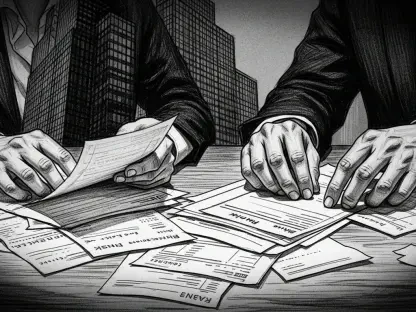Unveiling the Stakes: Insurance Industry Under Scrutiny
In the volatile landscape of 2025, the insurance sector faces mounting pressure as natural disasters intensify, leaving insurers and policyholders locked in high-stakes battles over catastrophic claims. A striking example emerges from Hope, Arkansas, where a commercial property owner, Hopeful Properties, LLC, has challenged Federal Insurance Company in a lawsuit over a denied $1.8 million storm damage claim. This dispute, rooted in a devastating storm from two years prior, underscores a critical market challenge: balancing insurer profitability with policyholder trust amid escalating environmental risks. As claims denials spark allegations of bad faith, the industry watches closely, aware that the outcome could redefine market dynamics.
This analysis delves into the broader implications of such conflicts, examining how they reflect deeper trends in claims handling, legal accountability, and risk management. With insured losses from natural catastrophes soaring—reaching tens of billions annually in the US—these disputes are no longer isolated incidents but signals of systemic stress. The focus here is to unpack the market forces at play, offering insights into current patterns and forecasting future shifts in the insurance landscape. Through this lens, the ongoing litigation becomes a microcosm of a sector grappling with unprecedented challenges.
Market Dynamics: Trends and Challenges in Storm Damage Claims
Rising Catastrophic Losses: A Growing Financial Burden
The insurance market is navigating turbulent waters as the frequency and severity of natural disasters continue to climb. Industry data reveals that insured losses from weather-related events in the US have consistently hit staggering figures, placing immense strain on insurers’ balance sheets. This trend, driven by climate shifts, has transformed storm damage claims into a battleground where financial exposure meets contractual duty. Insurers are increasingly tightening policy terms and scrutinizing claims to mitigate losses, a strategy that often fuels disputes like the one involving Hopeful Properties and Federal Insurance Company.
Beyond the numbers, the market is witnessing a shift in risk perception. Commercial property owners, especially in storm-prone regions like the South, face heightened vulnerability, pushing demand for comprehensive coverage. Yet, insurers are responding with more rigorous underwriting and claims assessment processes, sometimes leading to denials based on technicalities such as damage timing. This friction highlights a critical tension: while policyholders seek robust protection, insurers prioritize fiscal sustainability, setting the stage for legal confrontations that test market resilience.
Bad Faith Allegations: Eroding Trust and Market Stability
A pivotal trend reshaping the insurance market is the surge in bad faith lawsuits, as seen in the Arkansas case where Hopeful Properties accuses Federal Insurance of misconduct over a $1.8 million claim denial. The plaintiff alleges inadequate investigation and intentional misrepresentation, claiming the insurer prioritized self-interest over contractual obligations. Such accusations are becoming more common, reflecting a broader erosion of trust between insurers and policyholders, particularly in high-value commercial claims tied to natural disasters.
The implications of these lawsuits extend beyond individual cases, impacting market sentiment. When bad faith is alleged, it often prompts regulatory scrutiny and public backlash, pressuring insurers to reevaluate claims handling practices. In states like Arkansas, with stringent insurance laws mandating timely settlements, the legal risks are amplified, potentially leading to punitive damages and statutory penalties. As these disputes proliferate, they could drive up litigation costs across the sector, forcing insurers to allocate more resources to legal defense rather than claim payouts, further straining market dynamics.
Legal and Regional Variations: Fragmented Market Responses
Another layer of complexity in the insurance market stems from the fragmented legal landscape governing claims disputes. In Arkansas, where the current lawsuit unfolds, policyholder-friendly regulations impose strict timelines and penalties for delayed or wrongful claim denials, creating a challenging environment for insurers. This contrasts with other jurisdictions where standards may be more lenient, leading to inconsistent outcomes in bad faith litigation. Such regional disparities complicate market strategies for national insurers like Federal Insurance, who must navigate a patchwork of state laws.
Additionally, regional weather patterns exacerbate market challenges. The South, prone to frequent hail and windstorms, sees a higher incidence of disputed claims over damage causation and timing—a core issue in the Hopeful Properties case. Insurers often cite pre-existing damage to justify denials, a defense that critics argue is overused to avoid payouts. This dynamic underscores the need for standardized claims assessment protocols across regions, a reform that could stabilize market interactions but remains elusive amid varying local conditions and legal frameworks.
Future Projections: Navigating an Uncertain Insurance Landscape
Technological Innovations: Reshaping Claims Assessment
Looking ahead, the insurance market is poised for transformation through technological advancements in claims handling. Tools like drone imagery and AI-driven analytics are gaining traction, promising more precise damage evaluations following storms and other disasters. These innovations could reduce disputes over damage timing and causation, a central issue in cases like the Arkansas lawsuit, by providing objective data. However, their adoption raises concerns about transparency and potential misuse to support denials, a fear among policyholders that could hinder market trust if not addressed.
Insurers stand to benefit from faster processing times and reduced human error, potentially lowering operational costs. Yet, the market must grapple with the risk of over-reliance on technology, which may alienate clients if perceived as impersonal or biased. From 2025 to 2027, expect a gradual integration of these tools, accompanied by calls for regulatory oversight to ensure fair application. The balance between efficiency and accountability will shape how technology influences market stability in the coming years.
Regulatory Shifts: Tightening Oversight on Claims Practices
Another forecast for the insurance market involves heightened regulatory intervention as bad faith lawsuits gain prominence. State insurance departments and federal bodies may introduce stricter guidelines for claims investigations and settlement timelines, spurred by high-profile cases that expose systemic flaws. In Arkansas and beyond, outcomes of litigation like the one involving Hopeful Properties could catalyze reforms, mandating clearer communication and evidence standards during claims processing.
Economically, the rising cost of natural disasters is likely to push insurers toward revised risk models, potentially resulting in higher premiums or restricted coverage in high-risk areas. This shift could intensify market friction, as policyholders face affordability challenges while insurers aim to protect profitability. Over the next few years, regulatory frameworks will need to address these economic pressures, possibly through incentives for disaster mitigation or public-private partnerships to distribute risk more equitably across the market.
Trust-Building Strategies: A Market Imperative
A critical prediction for the insurance sector is the growing emphasis on trust-building initiatives to preempt litigation. Insurers may invest in enhanced communication channels and alternative dispute resolution mechanisms, such as mediation, to resolve claims conflicts before they escalate to court. This proactive approach could mitigate the reputational damage from bad faith allegations, fostering a more collaborative market environment where policyholders feel heard and valued.
Simultaneously, policyholders are likely to seek support from advocacy groups or legal collectives, amplifying their leverage in disputes. Market observers anticipate that from 2025 onward, these dynamics will encourage a cultural shift within the industry, prioritizing transparency over adversarial tactics. Successful insurers will be those who adapt by aligning claims practices with policyholder expectations, a strategy that could redefine competitive advantage in a market under intense scrutiny.
Reflecting on Market Insights: Strategic Pathways Forward
Reflecting on the analysis, the insurance market’s response to storm damage claims and bad faith lawsuits reveals significant vulnerabilities in trust and operational practices during 2025. The case of Hopeful Properties versus Federal Insurance Company, though specific to a $1.8 million denial, mirrors widespread tensions that test the sector’s ability to adapt to rising catastrophic losses. Legal and regional disparities further complicate the landscape, highlighting the fragmented nature of market responses to policyholder grievances.
Moving forward, insurers need to prioritize robust, evidence-based investigations and embrace technology with clear ethical guidelines to prevent perceptions of bias. Policyholders, on the other hand, are encouraged to strengthen documentation and seek early legal counsel in dispute-prone regions. Both sides stand to gain from exploring mediation as a cost-effective alternative to litigation, preserving relationships while addressing grievances. Ultimately, the industry is urged to advocate for standardized claims protocols and regulatory reforms, ensuring a balanced approach to risk management that can sustain market stability in the face of escalating environmental challenges.









